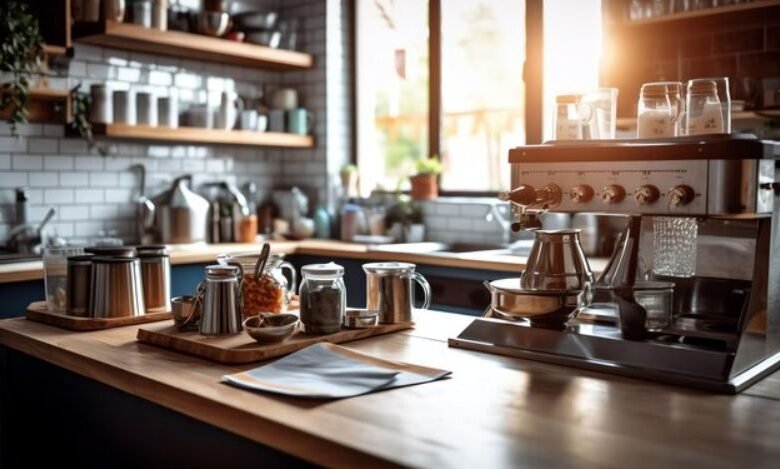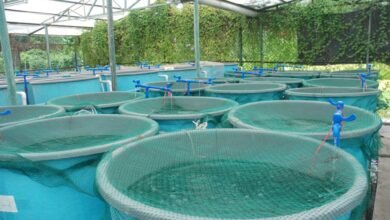Leasing Kitchen Equipment: Advice For Restaurant Owners

Are you opening a restaurant but need more money to purchase kitchen equipment? Leasing expensive equipment may be the ticket to opening your new restaurant venture. Leasing can relieve some of the initial financial pressure needed to start a business, as a substantial amount of money can be saved on equipment such as stoves and glass-door coolers.
Deciding whether leasing or buying commercial kitchen equipment makes the most financial sense for your restaurant’s future requires owners to ask the right questions and learn the pitfalls to avoid.
Let’s walk through the basics to make a sound and informed decision about restaurant equipment leasing.
Advantages and Disadvantages of Equipment Leasing
Understanding the benefits and limitations of leasing kitchen equipment for a restaurant is essential.
Advantages of Kitchen Equipment Leasing
Leasing restaurant equipment has several advantages, which make it an attractive option for most restaurant startups and entrepreneurs.
Cash Flow Management
Leasing lets you start a business with only a little money down. Instead of one colossal initial payment, leasing allows manageable monthly installments that work within budget. Some finance companies allow lease-to-own over time.
Brand-New Equipment
Leased equipment is delivered shiny, new, and straight from the manufacturer—there is no need to worry about warranty gaps or unreliability issues from previous wear and tear.
Service plans also support the quality of the equipment.
Potential Tax Write-Off Options
When filing taxes, lease payments can be considered business expenses, allowing for low tax burdens.
Be sure to consult with your accountant to verify if leasing offers any reductions to manage costs.
Quick Approvals
Leasing companies supply essential equipment quickly through leasing options. This accelerated access allows restaurants to equip their kitchens swiftly to open up their doors for business and serve customers sooner.
The sooner business is underway, the sooner revenue will come in. Pay the lease and other overhead quickly without worries.
Short-term Flexibility
Equipment leasing is the best option for a short-term or temporary restaurant. It works well for pop-ups or seasonal spots, as leasing provides equipment access without the commitment of buying.
Leasing is a beneficial option for pop-up establishments or temporary setups that aim to meet the sudden demands of sports, cultural, or other events.
Disadvantages of Kitchen Equipment Leasing
Leasing kitchen equipment also has some challenges, of course. Here are some disadvantages of leasing kitchen equipment.
Varying Interest Rates
Buying equipment means no worry about paying interest over time. However, with leases, rates vary depending on credit scores. Be sure to calculate the interest in advance to assess whether leasing is a viable option to save money.
Early Exit Penalties
Be prepared to pay penalties if a lease is terminated early. Paying off the lease in one shot is a potential revenue loss for the equipment leasing company, so they charge exit penalties to offset the loss.
Carefully read the lease terms to understand exit costs if business needs may change over time.
Ownership restrictions
Businesses do not own leased equipment. Hence, they cannot modify, customize, or move equipment to another location.
Leasing may not be the best long-term solution for a business looking to grow in scale over time.
How to Secure the Best Equipment Lease
As a restaurant business, it is imperative to consider various factors before signing an equipment lease. Making an informed decision is crucial to the business’s overall success.
Here are a few essential factors when looking to lease equipment from a leasing company:
Understand the Business Requirements
Before signing a lease contract, clearly understand the business’s requirements for short-term and long-term growth and success. Every detail from the concept and menu needs to be crystal clear.
Carefully assess the equipment needed for the dishes being served.
First, prioritize necessities like ranges, fridges, coolers, and stainless-steel tables.
Establish a Well-defined Budget
Leasing spreads purchases into affordable monthly amounts rather than one significant expense. Therefore, businesses can prepare monthly payments in advance.
Estimate total costs beforehand, incorporating lease payments, insurance, fees, and other expenses impacting cash flow.
It is advisable to hire an accountant to learn how leasing vs. buying impacts the bottom line in both the short and long term.
Read the Fine Print
While it may be tempting to skim or skip reading the leasing terms, be sure not to skim the contract at any cost. It would be unfortunate to assume that every detail is correct if something goes wrong in the transaction. It is best to avoid any unpleasant surprises.
Scrutinize the terms and conditions, including the lease length, renewal options, exit clauses, and maintenance or repair details.
Ask the equipment leasing company to explain if any terms require extra clarification.
Understand Repair and Service Terms
Equipment breakdowns can lead to enormous challenges for any business. Hence, it is essential to schedule repairs promptly.
Most leasing companies have terms that govern the repair and service requirements of the equipment. As a leasing customer, be sure to understand these teams thoroughly.
As some leasing companies push the clients to be responsible for repairs, seek options that offer full-service maintenance with fast emergency response times.
Assess Upgrade and Scaling Flexibility
As a restaurant evolves and grows, equipment needs may change. Hence, ensure that the lease allows seamless upgrades, downgrades, or modifications to gear as needs change.
The right leasing company will allow the option to swap out items over time.
Equipment Inspection
Even if leased, be sure to scrutinize appliances. Ensure that the ovens, fridges, coolers, etc., come from reputable manufacturers known for commercial-grade durability.
Overlooking these factors may jeopardize quality and consistency.
Equipment Trial
The lease-to-own model lets businesses test-drive equipment before fully committing.
Test the equipment first and examine its performance. This extra step will help avoid buyer’s remorse from expensive, underperforming gear.
Find the Right Leasing Company
Finding the right equipment leasing company is another crucial factor. While there are many companies to work with, it is always best to find the most suitable one.
Some companies lease equipment to large restaurants, while others focus on small, local businesses.
Check to ensure the company can accommodate your unique needs and requirements.
Read Reviews and Ask for Recommendations
Before entering a lease contract with a company, read online reviews or look for product feedback. Ask for recommendations in your area or social media groups. These communities often provide the best insights into leasing kitchen equipment.
Understand the challenges or drawbacks of working with certain leasing companies.
Similar to purchasing kitchen equipment, leasing must also be assessed with careful consideration and due diligence. This preliminary work will help secure the best equipment leasing companies, equipment, and terms for your business.
Therefore, spending adequate time researching and learning about these options is crucial to making the right choice.
If you are looking for a reliable name in the field, Econolease is a reputable Canadian company offering various leasing options.
With diverse lease, rent, and loan options, Econolease can meet all equipment requirements.



